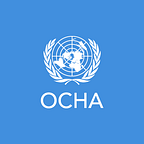Childhood in Crisis
An interview with photographer Vincent Tremeau on children’s lives and aspirations in one of the world’s worst crises
Encompassing north-eastern Nigeria and parts of Cameroon, Chad and Niger, the Lake Chad region has become plagued by one of Africa’s worst humanitarian crises due to conflict, extreme poverty and climate change. Over 10 million people need humanitarian assistance to survive, including 2 million people who have been forced to flee their homes. Thousands have been killed, abducted or raped by the armed group Boko Haram.
Vincent Tremeau is a French photographer helping to shed light on one of the groups most affected by the crisis: children. He has travelled to the region several times, bringing little more than a camera and a simple question with him: “What do you want to be when you grow up?” We sat down with Vincent to talk about his photos, many of which are being featured in an Instagram takeover marking the Oslo Humanitarian Conference on Nigeria and the Lake Chad Region.
In your project ‘One Day, I Will’, you ask children to portray what they want to be when they grow up. What was the inspiration for this project?
I was on assignment in the Central African Republic in 2014, which was in the middle of a violent conflict. I spent two days there photographing a Muslim community that had taken refuge in a church. They could not leave the compound–not even for a minute–and the children had been out of school for over a year.
I was interviewing a young girl about her situation, but her experience was so terrible and her testimony so overwhelming that she started crying. I stopped the interview, as I did not want her to cry or experience more trauma, and tried instead to think of a way for the children to express themselves while having fun at the same time.
So I came up with a game for the kids, where I asked them what they wanted to be when they grow up, and they had an hour or two to find toys, clothes and props to illustrate this. I was really impressed by their creativity and how they managed to express their desires and futures with so little, so I decided to replicate the activity during my next assignment. At this point, I have done the series in every crisis-affected country I have visited, and photographed over 200 children.
How do the photo shoots work?
Generally, I talk to school teachers in the communities I visit, and they help to explain the project to their classes. The kids then have a certain amount of time–from an hour to a day–to think about what they want to be and to pick out their costumes. There are no rules; the kids are encouraged to be as creative as they want, using whatever they can find in their environment.
I am always astounded by the creativity the children show during the shoots. Many of them have very little but they manage to illustrate their aspirations so beautifully. One time, a boy arrived at the shoot with a chicken in his arms, as he wants to be a chicken farmer like his father. In Chad, I met a girl who used a chalkboard as a tablet to illustrate her dream of working in IT. These kinds of surprises happen all the time, and they are one of my favourite parts of the project.
You are taking over OCHA’s Instagram this week to highlight the situation for children in the Lake Chad region. What is the core message that people should take away from these photos?
I think the photos reach people on various levels since they touch on so many different themes, such as the impact of conflict, violence against women, malnutrition and many others.
But for me, the core of the project centres on peacebuilding. In many countries, boys and girls are growing up in a context of brutal conflict, where soldiers are often seen as role models and violence is a common tool for resolving grievances. And these environments directly shape the desires and aspirations that children have for their own lives. Many of the kids I photograph want to become soldiers, a trend that not only reflects their current context but also gives a glimpse into what might become their futures and what the world may encounter years down the road.
In other words, what happens to the youngest generation influences all of our futures. And by investing early on, through education, safe spaces and other initiatives, we can help to make lasting change.
Looking ahead, I hope this project leads to real impact for the communities I have visited and the children I have met. It is a side project for me, something I do during my lunch breaks when I am on assignment in different countries. What I would like to see is for the pictures to turn into concrete projects that help to promote peace and ensure access to education for children affected by crises.
You ask the children what they want to be when they grow up. What about you? Did you always want to be a photographer?
Actually, no! I discovered photography when I was a law student in Argentina. It was a great way for me to get to know the city I was living in, and also, since I was quite shy, it was a good excuse to interact with new people.
After my law studies, I started managing humanitarian projects. I went to several countries affected by disasters and conflict, where I met photographers and was inspired by their work. I felt like I would be better at this kind of job, using photography as a medium to raise awareness and advocate for others.
You can see Vincent’s photos in his Instagram takeover of @UNOCHA and on his own Instagram account @vtremeau.
